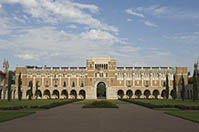ENGLISH 260: Survey of American Literature
In an era committed to cyberculture, does the study of English matter? To grapple with this question we read a range of materials from the early 1600s to the present. We also watch films, debate American history and cultural politics, and visit exemplary websites.
We begin by exploring how it is we "know" what to read, pondering alongside this issue the related dilemma of establishing literary origins. Cooper's Last of the Mohicans, Ridge's Joaquin Murieta, and two film versions of Cooper's tale (1932, 1992) all paint differing pictures of American historical origins and the origins of American literatures. How do we want to understand those differences?
By midterm we focus on literary culture of the 1850s, mid-century wars (both the Mexican American War and the Civil War), and each one's relationship to the American Renaissance. We read The Scarlet Letter, and then turn to such different abolitionist texts as Uncle Tom's Cabin and Incidents in the Life of a Slave Girl. The politics of literary sentimentality play a large role in these discussions, which conclude with Ruiz de Burton's The Squatter and the Don. We also view the feature film Anna and the King, a contemporary version of 19th century female moral suasion.
As we turn toward the twentieth century, we continue to track the larger cultural function of literature, especially in light of the 20th century's devotion to a consumption-based economy and mass communication media like radio, film, television, and cyberspace. We emphasize writing which experiments with literary and social norms, including modernist poetry by Eliot, Pound and Lowell, and novels by Hemingway and Hurston. We finish with the controversial mid-century texts, Peyton Place (one of the best selling novels of all time), and Allen Ginsberg's Howl.
